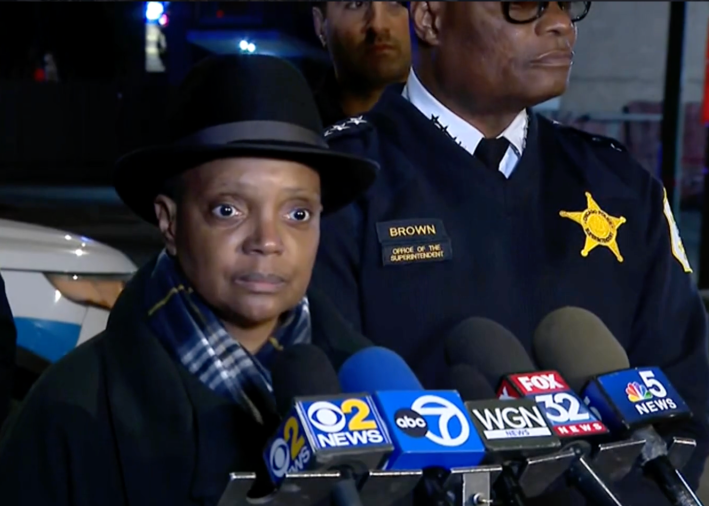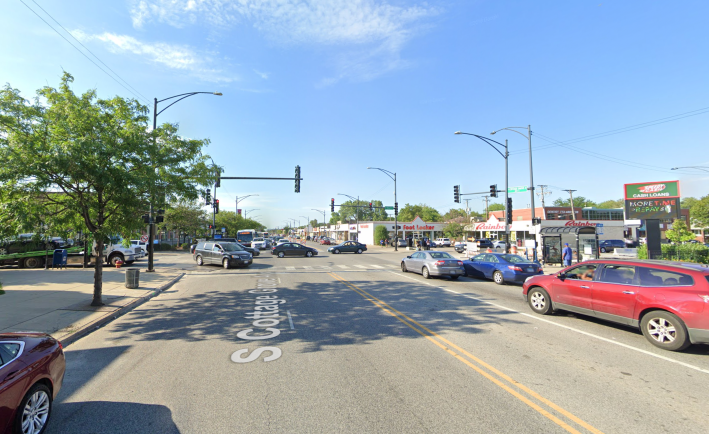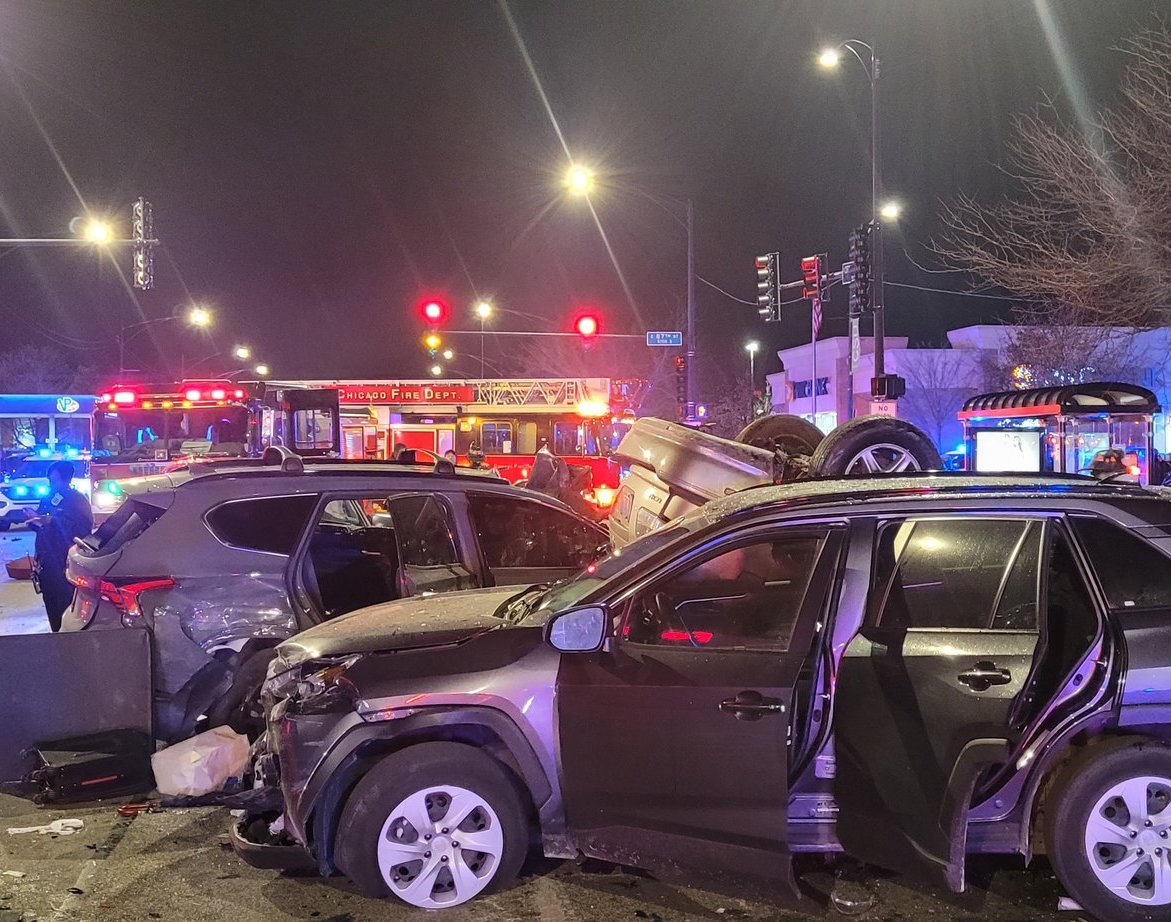Traffic violence is so commonplace in Chicago, especially in the COVID-19 era, it's easy to become numb to the constant headlines of death and destruction. But last Wednesday's seven-car pileup in Chatham, which killed two people and injured 11, was so horrific that top city officials had to take notice.
According to police, on Wednesday, November 23, at about 5 p.m., the driver of a black Dodge Charger car was traveling north at a "very high rate of speed" in the southbound lanes of Cottage Grove Avenue. The motorist entered the intersection with 87th Street, striking seven other cars. The charger came to rest facing south in the middle of the intersection, and then burst into flames, killing the driver and a passenger.
The next day police said 10 people were hospitalized, including three women, three men, and five children, ranging in age from 10 months old to 15 years old. An additional person was injured but not hospitalized. While most of the victims were traveling in cars, a 54-year-old male pedestrian suffered a dislocated kneecap.
According to police, the Charger had been reported stolen in west-suburban Markham on the day of the crash, and a "long-rifle type of firearm" was found in the vehicle.
This tragic crash was a near-perfect storm of multiple factors that have contributed to senseless loss of life and destruction of property in our city, some of which have gotten worse during the pandemic. Obviously the case highlights the region's car theft and gun violence epidemics, raising a number of underlying societal issues, from education and employment to gun control.

At a press conference at 87th/Cottage Grove in the wake of the crash, Mayor Lori Lightfoot said about 150 people died in collisions in Chicago in 2021, with roughly 100 fatalities so far this year. She rightly noted that speeding and distracted driving have been major factors in our city's traffic violence crisis. "A lot of those are related to speed, distracted driving, and other issues. But when you're going at that high rate of speed, anyone that you hit, whether it's a car or a pedestrian, you significantly diminish their ability to survive."
Lightfoot largely framed the issue as one of personal responsibility. "I just also want to urge people, you have to slow down," she said. "This is something that we can control, you just take your foot off the gas and obey the local speed limits... If people don't have more respect for themselves and others and continue to speed at the high rates we're seeing, we're going to certainly endure more tragedies."

However, that narrative overlooks other factors that contribute to high-speed crashes. At this location, 87th and Cottage Grove both have wide five-lane layouts that encourage speeding. Streetsblog's Steven Vance noted that there have been 56 reported crashes at this intersection so far this year, including 12 injuries.
12 people have been injured in 56 crashes at this intersection this year already pic.twitter.com/qaJKmKd1Fu
— Steven (@stevevance) November 24, 2022
One thing that might have made a difference in this case would have been if there weren't so many lanes for drivers. If 87th and Cottage had one travel lane in each direction, instead of two, plus a turn lane, everyday speeding and crashes would be much less common. And while appeals to personal responsibility may not have made much difference to the driver of a stolen car, a narrower street layout via a "road diet" might have made it physically impossible for them to travel at such a deadly speed. Other strategies to encourage safer driving on speeding-prone streets include pedestrian infrastructure such as sidewalk bump-outs that shorten crossing distances and provide visual cues for drivers to slow down; speed cameras; and digital speed feedback signs.
"The mayor says 'slow down' but fails to push for proven strategies to reduce traffic deaths," tweeted Streetsblog contributor Steven Lucy. "More people died in this crash tonight than die in Oslo [the capital of Norway] in an entire year. 30 years ago they had the same road death rate as us. The solutions are known... Road design > vehicle design > enforcement > guilt."





